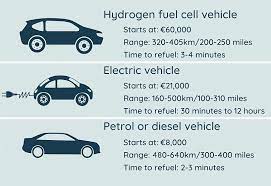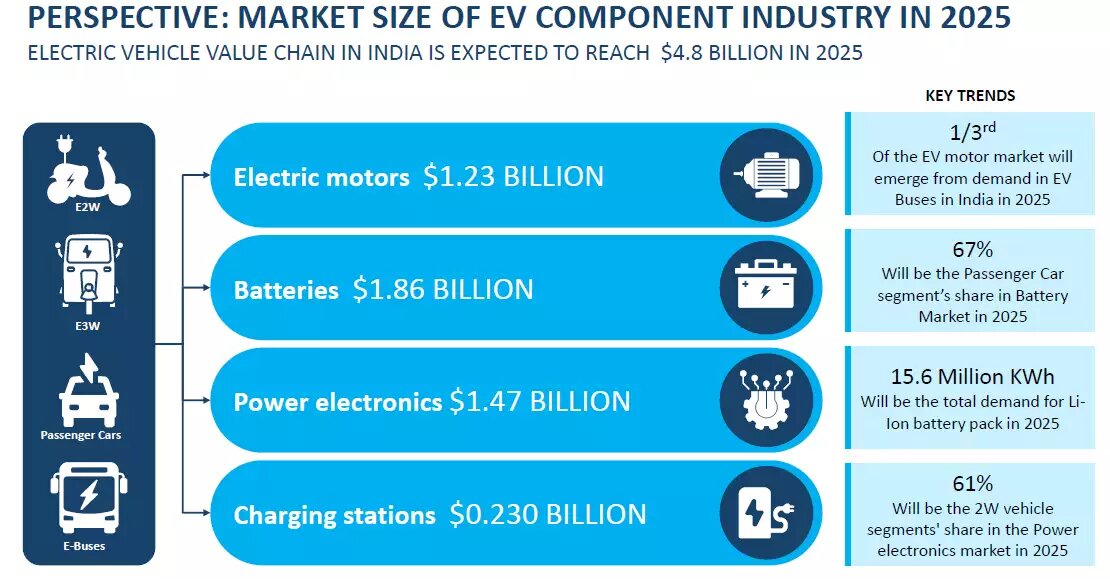Description

Copyright infringement is not intended
Context: World's most advanced technology developed Green Hydrogen Fuel Cell Electric Vehicle (FCEV) Toyota Mirai, first of its kind project in India which aims to create a Green Hydrogen based ecosystem in the country launched.
More about news:
- It is an important initiative which will promote clean energy and environmental protection by reducing dependence on fossil fuels and thereby make India 'Energy Self-reliant' by 2047.
- Fuel Cell Electric Vehicle (FCEV), powered by Hydrogen is one of the best Zero Emission solutions.
- Green Hydrogen can be generated from renewable energy and abundantly available biomass.
What are Electric Vehicles (EVs)?
- An electric vehicle, uses one or more electric motors or traction motors for propulsion.
- An electric vehicle may be powered through self-contained battery, solar panels or an electric generator to convert fuel to electricity.
Current status of EVs in India:
- In India, there’s a mixed performance by the auto sector when it comes to electric mobility.
- While electric two-wheelers and three-wheelers have found a fair level of traction, other vehicle segments are far behind.
- The Indian electric vehicle (EV) market saw a 20 percent growth in 2019-20 with sales of 156,000 units, of which 152,000 or 97 percent of total volume were two-wheelers.
- Just 3,400 electric cars were sold in the world's second-most populous nation during the last business year, compared to sales of 1.7 million conventional passenger cars.
- The industry size doesn’t include sales in largely unorganised three-wheeler market, which is estimated to be at around 90,000 during the last financial year.
Benefits of EV:
- Reduced greenhouse gases emission- petrol and diesel are important sources of carbon dioxide emission. CO2 is a leading source of global warming. EVs can help in reducing the GHG emissions.
- Reduced air pollution- Petroleum fuels are also a source of NOx, SO2 and particulate matter along with photochemical smog. With EV this pollution can be addressed.
- Reduced noise pollution- EV vehicles produce less noise as compared to petrol or diesel vehicles. This will be really helpful to transport in urban areas, forested areas etc.
- Use of renewable energy- with EV there will be a rise in electricity demand. This will give scope for more renewable energy like solar and wind.
- Easier to maintenance -An internal combustion engine usually contains more than 2,000 moving parts. An electric motor onboard an EV on the other hand contain around 20 moving parts.
- Low cost of ownership -It is a proven fact by many researches that EVs offer way lower cost of ownership in their lifecycle compared to fossil fuel powered vehicles

Challenges:
- High price -There is no price parity between electric vehicles and ICE vehicles in India. Electric vehicles are way more expensive than their conventional fuel-powered counterparts. For example, the Tata Nexon price starts from ₹7.19 lakh, while the Tata Nexon EV price starts from ₹13.99 lakh. Weak charging infrastructure beyond major urban areas.
- Range anxiety -Range anxiety is one of the crucial challenges ahead of the growth path for electric vehicles in India. The EV customers are often worried about the vehicles capability to reach point B from point A before the battery runs out.
- Consumer perception -The consumer perception about electric vehicles in India is still weak compared to ICE vehicles. The range anxiety, lack of charging infrastructure, a wide gap between EV and ICE vehicle prices, lack of assurance about satisfactory resale value play key roles in that.
- Scarce battery technology -The lithium-ion battery is the most popular and widely used energy source for EVs. India doesn't produce lithium. The country doesn't produce li-ion batteries either.
- Majority of EVs are not covered under FAME scheme -The Indian government took an attempt to promote electric mobility in the country via incentivizing and discounts for EVs. The terms and conditions of the FAME scheme doesn't support a majority of the electric vehicles.
- Lack of products -Only a few options are there and majority among them are not from established trustworthy brands.
Government steps
- FAME (faster adoption of electric and hybrid vehicles) scheme in its phase 2 has been going on.
- EV policy - individual states are coming with EV policies. Eg. Recently the Maharashtra government came up with its policy till 2025.
- Green colored number plates - the government has decided to use green colored number plates for EVs.
- The Ministry of Power has issued a policy on charging infrastructure and has issued a notification clarifying that charging electric vehicles will be a service, not a sale of electricity.
- Decision to promote aluminum batteries as an alternative to lithium batteries.
- electricity regulatory commissions have also brought out special tariffs for EV charging, and ARAI has introduced standards for AC & DC charging.
- MoHUA has amended Building Bye-laws and Urban and Regional Development Plans Formulation and Implementation Guidelines to make charging infrastructure development as an integral part of urban planning, development and construction.
- Suggestions
- The country needs to learn from China. Here various steps are taken like allowing only EVs in business districts, reserving lanes on the road only for EVs etc.
- There is a need to promote batteries research and productionin India to reduce its cost.
- There needs to be a target based approach as in the EUwhich tries to have EVs by 2035.
- As Indian is a two wheeler driven country, the sector should get more focus.
- Charging infrastructure should be improved by incentivising housing colonies, parking lots, malls etc along with petrol pumps as well along highways.
Conclusion
- India can emerge as the EV capital of the world and this can help India to achieve its INDC goals along with SDG goals.
https://www.pib.gov.in/PressReleasePage.aspx?PRID=180












